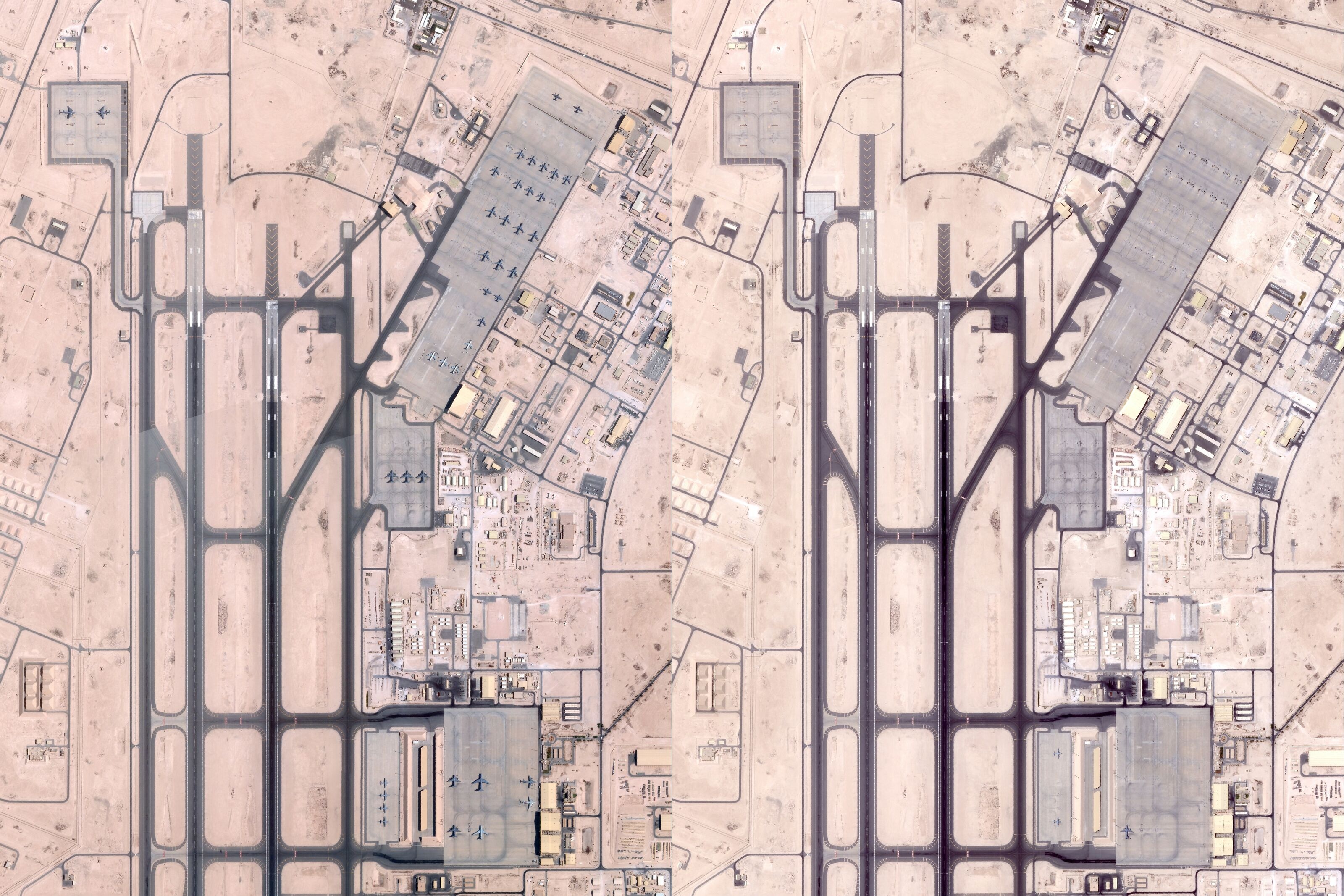Washington, United States – Dozens of US military aircraft are no longer on the tarmac at a major US base in Qatar, satellite images show – a possible move to shield them from eventual Iranian air strikes, as Washington weighs whether to intervene in Tehran’s conflict with Israel.
In an image taken on June 19, only three aircraft are visible.
The US embassy in Qatar announced Thursday that access to the base would be limited “out of an abundance of caution and in light of ongoing regional hostilities,” and urged personnel to “exercise increased vigilance.”
The White House says US President Donald Trump will decide sometime in the next two weeks whether to join ally Israel’s strikes on Iran. The Islamic republic could then respond by striking US bases in the region.
Mark Schwartz, a former lieutenant general in the US Army and a defense researcher at the Rand Corporation, said the personnel, aircraft and installations at Al Udeid would be “extremely vulnerable” given its “close proximity” to Iran.
Schwartz, who served in the Middle East, told AFP that even shrapnel could render the aircraft “non-mission capable.”
“You want to reduce risk to US forces, both personnel and equipment,” he said.
The planes that have left the tarmac since early June could have been moved to hangars or to other bases in the region.
A US defense official would not discuss the specific positioning of assets but told AFP: “We remain committed to maintaining operational security while executing our mission with the highest level of readiness, lethality and professionalism.”
US forces in the Middle East have been mobilized since Israel’s first strikes on Iran nearly a week ago, with an additional aircraft carrier en route and significant aircraft movement.
An AFP analysis of open source data tracking aircraft positioning showed that at least 27 military refueling planes — KC-46A Pegasus and KC-135 Stratotanker planes — traveled from the United States to Europe from June 15-18.
Twenty-five of them were still in Europe as of late Wednesday, with only two returning to American soil, the data showed.







